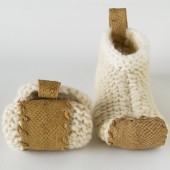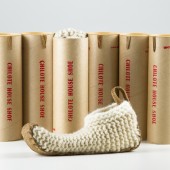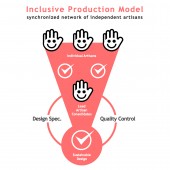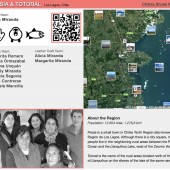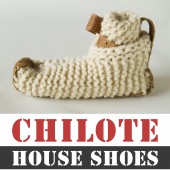Chilote House Shoes Indoor Shoe by Stiven Kerestegian |
Home > Winners > #24632 |
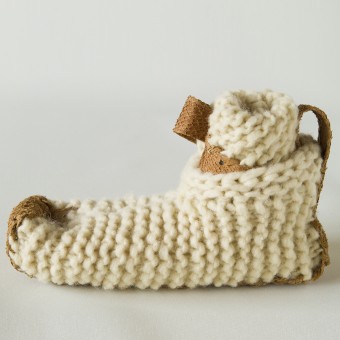 |
|
||||
| DESIGN DETAILS | |||||
| DESIGN NAME: Chilote House Shoes PRIMARY FUNCTION: Indoor Shoe INSPIRATION: The main inspiration for this product were the local social and a material resource available in the Chilean Patagonia. We could not have designed this product in a studio in any major city as the discoveries and opportunities identified were a direct result of our interaction and relationship with the local culture, communities and industry. UNIQUE PROPERTIES / PROJECT DESCRIPTION: The Chilote Shoe is a design-craft product made 100% by hand in the Chilean Patagonia using only repurposed and up-cycled salmon leather and natural wool. This simple, noble, extremely comfortable and highly sustainable indoor shoe redefines the concept of inclusive design and conscious consumption. It is the result of the synergy created by three valuable assets; design guided craftsmanship, noble renewable materials from the Patagonia, and a disruptive socially inclusive manufacturing ecosystem. The challenge was to create a highly sustainable opportunity that redefines the meaning of social inclusiveness, eco-materials and processes as well as what is desirability and commercial viability. In this context, we needed to go beyond the traditional limitations imposed on sustainability measures of current manufacturing practices where incremental steps allow only small iterative improvements. Instead, we began focusing on the most eco-friendly materials and production methods available that were compatible with the local craftsmanship and social realities. Those limitations turned out to be the enablers of the Chilote House Shoe's universal appeal not only for it's aesthetic and functional qualities but also by providing a highly innovative story-line that embraces sustainability' OPERATION / FLOW / INTERACTION: - PROJECT DURATION AND LOCATION: The project was completely designed and developed in Puerto Varas, Chile in 2010 and officially launched in N. America in August 2011 at the New York International Gift Fair where it was awarded the prestigious Eco-Choice Award among others since it's launch. FITS BEST INTO CATEGORY: Social Design |
PRODUCTION / REALIZATION TECHNOLOGY: Materials: Salmon Leather: Repurposed and up-cycled salmon leather is extremely durable and resilient but can feel as soft as suede and is naturally very flexible and elastic. It is considered an exotic leather because of it's unique natural scaly pattern but unlike other exotics, it is completely renewable being a by-product of the commercial salmon industry. Natural Wool: Free range patagonian sheep wool is one of the best insulating materials available, it absorbs moisture and repels water, it filters air allowing the skin to breathe and has self cleaning capabilities that do not require any industrial process. Production Methodology: A synchronized network of independent artisan women organized in a highly inclusive and ethical production ecosystem that is compatible with their cultural realities. These production groups are organized in local social clubs lead by a lead artisan who micro manages the local production. Each social club then becomes a sort of micro-production plant that consolidates from the individual artisans in that community before we consolidates the production from several of these communities. The project creates a structure and model that promotes independence, self organization, leadership and accountability with a source of income that is both dignified and economically rewarding all just a few steps away from their homes. This model is very attractive for the participants as it allows them to tend to their family obligations and save time and money in travel and transportation. It is also worthy of mention that there is a very positive self rewarding element to this model as most participants have communicated a sense of pride and belonging that is not achievable by any other readily available source of income for them. SPECIFICATIONS / TECHNICAL PROPERTIES: Each Chilote Shoe is packaged in a recycled paper tube with recyclable tin caps at each end. The packaging dimensions are 25cm long with a diameter of 12 cm. The shoes are unisex and available in three sizes (S, M & L). TAGS: renewable, sustainable, inclusive, social, repurposed, natural, craft, shoes, salmon, leather, wool RESEARCH ABSTRACT: - CHALLENGE: The problem was proposed as; how do we think globally and act locally? The challenge was straight forward, to create a highly sustainable opportunity that redefines the meaning of social inclusiveness, eco-materials and processes as well as what is desirability and commercial viability. The opportunity was identified through the manifestation of local social and material resources in the Chilean Patagonia. We needed to go beyond the traditional limitations imposed on sustainability measures of current manufacturing practices where incremental steps allow only small iterative improvements. Instead, we began focusing on the most eco-friendly materials and production methods available that were compatible with the local craftsmanship and social realities. Those limitations turned out to be the enablers of the Chilote House Shoe's universal appeal not only for it's aesthetic and functional qualities but also by providing a highly innovative story-line that embraces sustainability' ADDED DATE: 2012-01-10 14:15:47 TEAM MEMBERS (2) : Stiven Kerestegian and Francisca Apparcel IMAGE CREDITS: Stiven Kerestegian, 2011. |
||||
| Visit the following page to learn more: http://www.chiloteshoes.com/ | |||||
| AWARD DETAILS | |
 |
Chilote House Shoes Indoor Shoe by Stiven Kerestegian is Winner in Social Design Category, 2011 - 2012.· Read the interview with designer Stiven Kerestegian for design Chilote House Shoes here.· Press Members: Login or Register to request an exclusive interview with Stiven Kerestegian. · Click here to register inorder to view the profile and other works by Stiven Kerestegian. |
| SOCIAL |
| + Add to Likes / Favorites | Send to My Email | Comment | Testimonials | View Press-Release | Press Kit |
Did you like Stiven Kerestegian's Social Design?
You will most likely enjoy other award winning social design as well.
Click here to view more Award Winning Social Design.


